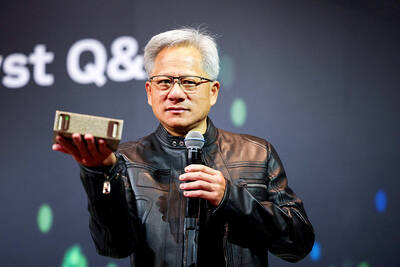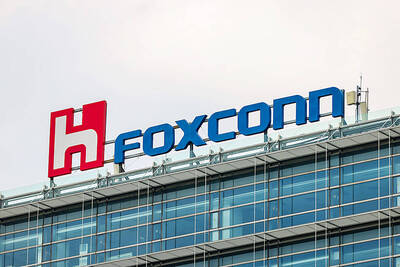Seven-year-old Faith Lennox never thought she needed a left hand; after all, she could not remember losing hers when she was only nine months old.
However, when it came to getting one custom made in a day by a 3D printer, that was a different story. Particularly when she got to pick the colors — her favorite pink, blue and purple, like the ones on the tank top she was wearing.
It did not hurt, either, that the appendage, called a robohand, looks a lot like the pair Marvel superhero Iron Man wears.
“It’s really cool,” the otherwise shy little girl said with an exuberant grin as she stood surrounded by high-tech computers in the Build It Workspace in a suburb of Orange County, California, on Monday.
Build It Workspace is a 3D printer studio that teaches people to use high-tech printers and provides access to them for projects. It also does commercial printing.
She had gotten out of school early to go there with her mother, Nicole, to watch in fascination as her new hand began to take shape. She stood for several minutes transfixed as it slowly moved from computer image to hard-plastic reality. She planned to return on Tuesday to try it on.
The finished product will be the result of an emerging technology that is revolutionizing prosthetics, especially for children like Faith, who quickly outgrow expensive prosthetic limbs and have trouble even using them because of their size and weight, Build It’s Mark Lengsfeld said.
“It’s an amazing thing to be doing,” the company’s president and founder said of making a hand that weighs less than 450g out of the same kind of plastic used in automobile parts.
Although Lengsfeld’s company has printed out everything from pumps for oil and gas companies to parts for unmanned aerial vehicles, this is the first hand he and his three employees have built.
Airwolf 3D, whose printers built Faith’s hand, recently cranked out 200 hands for children around the world as part of an international competition to see which company could use the most 3D printers in one space at one time.
Airwolf, with 159 printers going, won by one, said creative director Tyler Caros, who was keeping watch on Monday as the hard plastic going into Faith’s hand slowly unspooled.
The oldest of three children, Faith had compartment syndrome when her position during childbirth cut off the flow of blood to her left forearm, irreparably damaging tissue, muscle and bone.
After nine months of trying to save the limb, doctors determined they had to amputate just below the elbow.
Faith’s parents were working with the nonprofit group E-Nable to get her a 3D-printed hand, but the technology is so new there is a waiting list, her mother said.
Then she learned of what Lengsfeld’s company could do from a friend whose son visited with his Scout troop.
E-Nable provides open-source technology for building the hand, Lengsfeld said, making it economical for anyone with the right printer and a set of instructions to create one. Faith’s only costs US$50, and when she outgrows it she can easily build a bigger replacement.
“It’s been an honor to help her,” he said.
The little girl who taught herself to swim at age three and surfs with her father already knows what she plans to do when she puts that new hand on.
“Ride my bike,” she said with a big grin.
Although she is already a competent rider, she said that making turns with just one hand can be a little tricky.

SEEKING CLARITY: Washington should not adopt measures that create uncertainties for ‘existing semiconductor investments,’ TSMC said referring to its US$165 billion in the US Taiwan Semiconductor Manufacturing Co (TSMC, 台積電) told the US that any future tariffs on Taiwanese semiconductors could reduce demand for chips and derail its pledge to increase its investment in Arizona. “New import restrictions could jeopardize current US leadership in the competitive technology industry and create uncertainties for many committed semiconductor capital projects in the US, including TSMC Arizona’s significant investment plan in Phoenix,” the chipmaker wrote in a letter to the US Department of Commerce. TSMC issued the warning in response to a solicitation for comments by the department on a possible tariff on semiconductor imports by US President Donald Trump’s

‘FAILED EXPORT CONTROLS’: Jensen Huang said that Washington should maximize the speed of AI diffusion, because not doing so would give competitors an advantage Nvidia Corp cofounder and chief executive officer Jensen Huang (黃仁勳) yesterday criticized the US government’s restrictions on exports of artificial intelligence (AI) chips to China, saying that the policy was a failure and would only spur China to accelerate AI development. The export controls gave China the spirit, motivation and government support to accelerate AI development, Huang told reporters at the Computex trade show in Taipei. The competition in China is already intense, given its strong software capabilities, extensive technology ecosystems and work efficiency, he said. “All in all, the export controls were a failure. The facts would suggest it,” he said. “The US

The government has launched a three-pronged strategy to attract local and international talent, aiming to position Taiwan as a new global hub following Nvidia Corp’s announcement that it has chosen Taipei as the site of its Taiwan headquarters. Nvidia cofounder and CEO Jensen Huang (黃仁勳) on Monday last week announced during his keynote speech at the Computex trade show in Taipei that the Nvidia Constellation, the company’s planned Taiwan headquarters, would be located in the Beitou-Shilin Technology Park (北投士林科技園區) in Taipei. Huang’s decision to establish a base in Taiwan is “primarily due to Taiwan’s talent pool and its strength in the semiconductor

French President Emmanuel Macron has expressed gratitude to Hon Hai Precision Industry Co (鴻海精密) for its plan to invest approximately 250 million euros (US$278 million) in a joint venture in France focused on the semiconductor and space industries. On his official X account on Tuesday, Macron thanked Hon Hai, also known globally as Foxconn Technology Group (富士康科技集團), for its investment projects announced at Choose France, a flagship economic summit held on Monday to attract foreign investment. In the post, Macron included a GIF displaying the national flag of the Republic of China (Taiwan), as he did for other foreign investors, including China-based